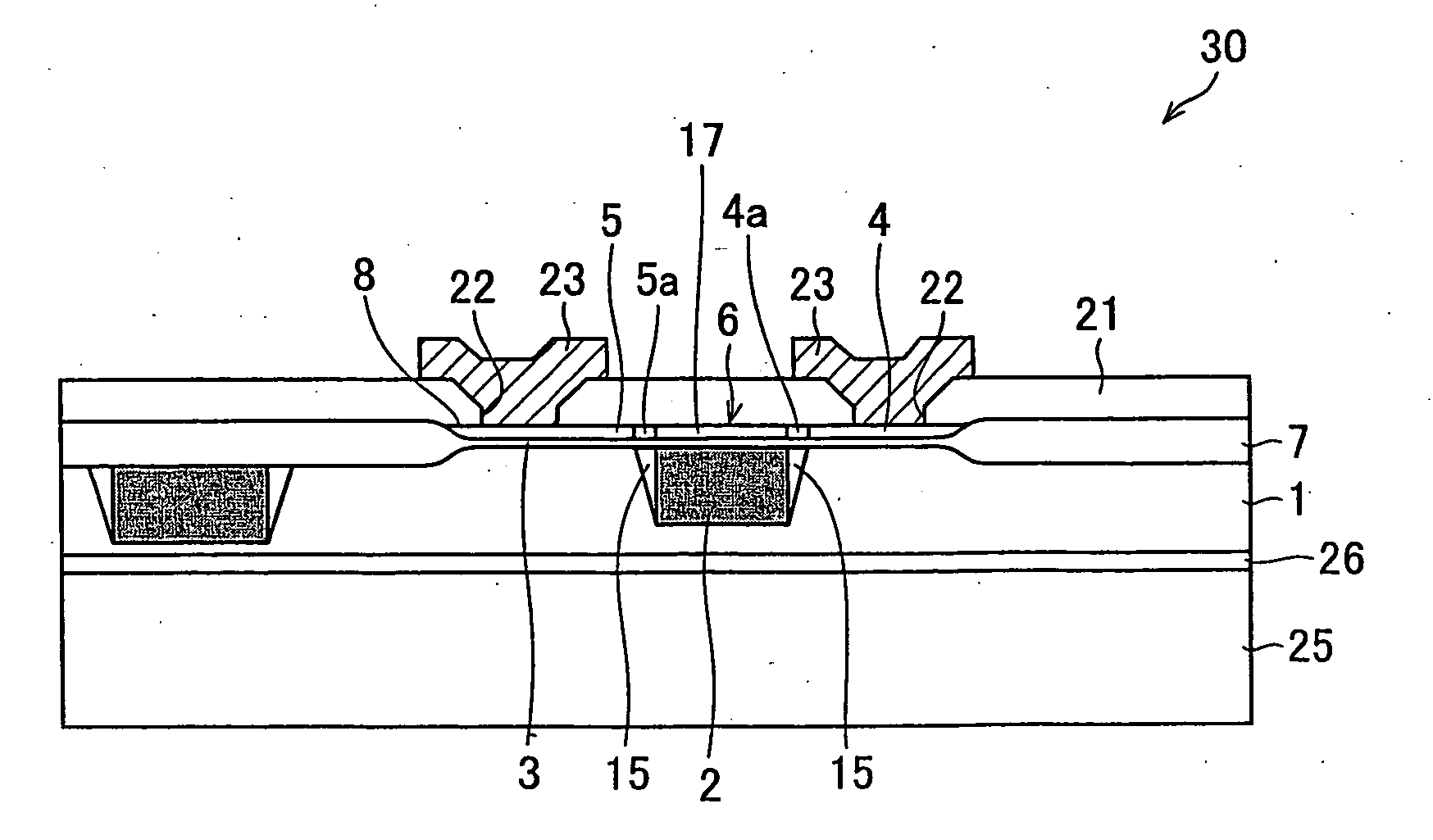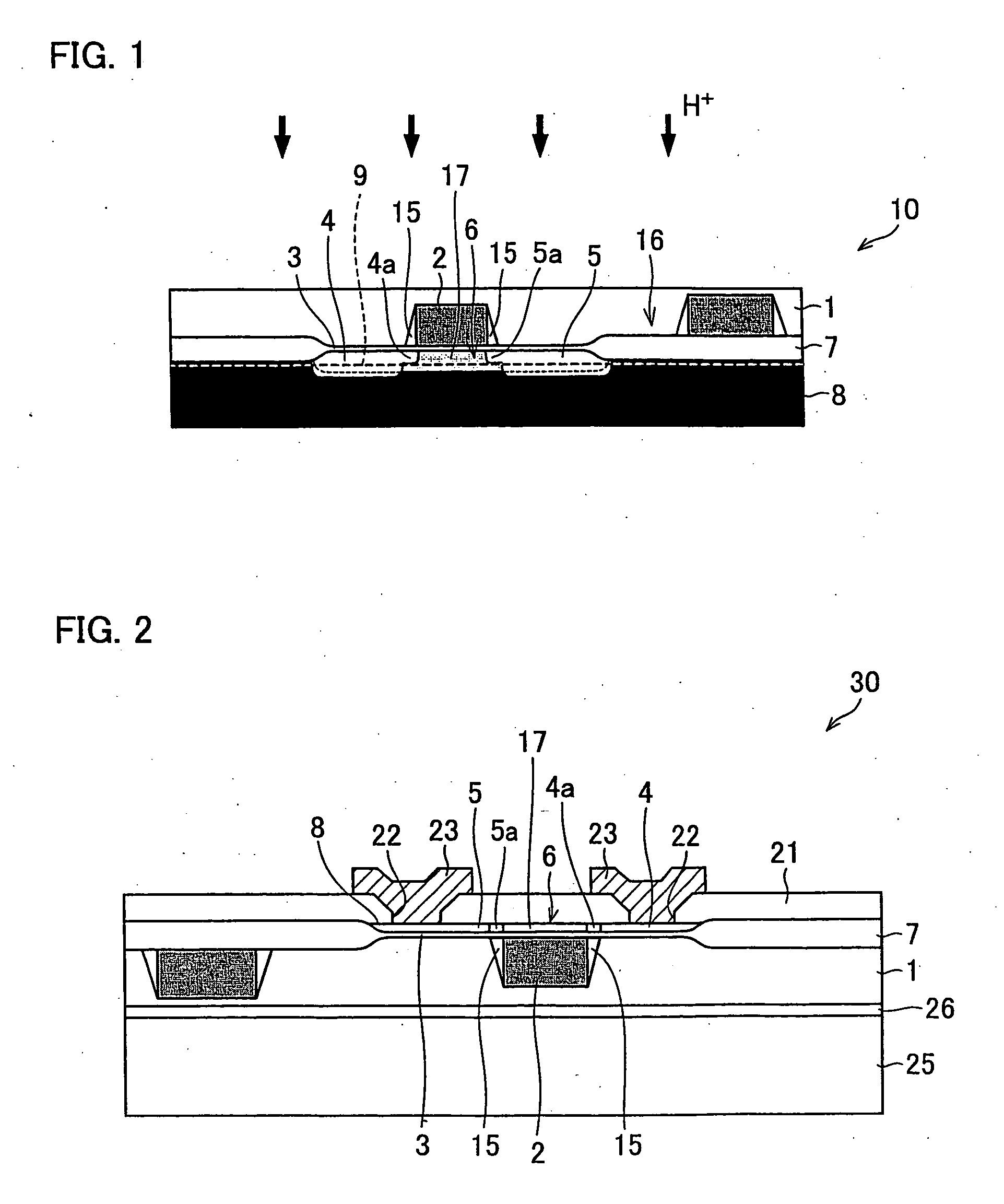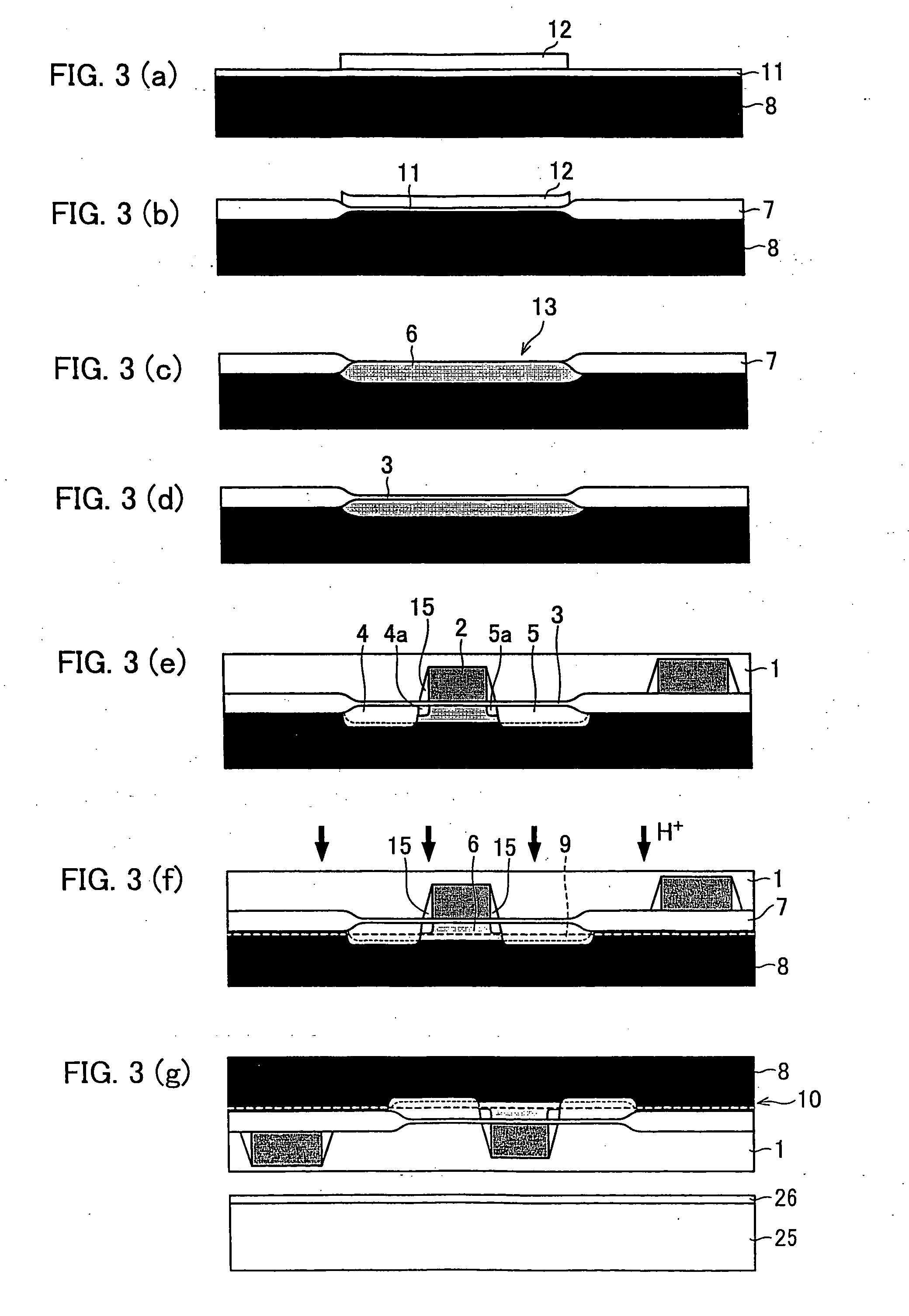Semiconductor substrate, semiconductor device, and manufacturing methods for them
a semiconductor and substrate technology, applied in the direction of semiconductor devices, identification means, instruments, etc., can solve the problems of insufficient device performance and integration, inability to adopt transistors for integration of complex systems, and difficulty in ensuring high-speed performance and high integration density, etc., to achieve the effect of reducing the area of the device, and improving the performan
- Summary
- Abstract
- Description
- Claims
- Application Information
AI Technical Summary
Benefits of technology
Problems solved by technology
Method used
Image
Examples
referential embodiment
[0063] Before the explanation of the present embodiment, the following describes a technology suggested in an unpublished patent application, which is made by the same inventor prior to the present invention, aimed at solving the conventional problems.
[0064] First, the conventional problems are summarized below.
[0065] In a SOI (Silicon On Insulator) structure, since the devices are formed on a silicon (Si) wafer, the total size of all devices to be provided thereon needs to fall within the silicon (Si) wafer. However, the size of silicon (Si) wafer is limited, and may be smaller than a large glass substrate.
[0066] Moreover, since a singlecrystalline Si device formed on the silicon (Si) wafer is bonded onto a glass substrate with an adhesive of, for example, an epoxy resin, there are serious difficulties to additionally performing a defect recovery thermal process (Annealing process), an inter-layer insulating film forming process, or a metal-wiring forming process, after the bond...
first embodiment
[0077] One embodiment of the present invention is described below with reference to FIGS. 1 through 7.
[0078] Note that, the semiconductor substrate and the semiconductor device according to the present embodiment provide improved performance and improved functionality on account of a structure in which a MOS non-singlecrystalline Si thin film transistor and a MOS singlecrystalline Si thin film transistor are formed in different regions of an insulating substrate, such as a glass substrate. This semiconductor device is to be mounted to an active matrix substrate using TFTs (Thin Film Transistor).
[0079] The MOS thin film transistor is a general transistor comprising an active layer, a gate electrode, a gate insulating film, and a high concentration impurity doped portion (source / drain electrodes) formed on each side of the gate, wherein the gate electrode controls the carrier density of the semiconductor layer under the gate, so as to control a flow of source-drain current.
[0080] A...
second embodiment
[0144] Another embodiment of the present invention is explained below with reference to FIGS. 8 through 11. Note that, the following embodiment is identical to First Embodiment except for the arrangements explained below. For ease of explanation, materials having the equivalent functions as those shown in the drawings pertaining to the foregoing First Embodiment will be given the same reference symbols, and explanation thereof will be omitted here.
[0145] In the semiconductor substrate 10 and the semiconductor device 30 according to First Embodiment, as shown in FIG. 2, the metal wiring layers 23 as external electrodes are connected directly to the source and drain regions 4 and 5 through contact holes 22 of the protective-insulating-interlayer film 21.
[0146] On the other hand, as shown in FIG. 8, in the semiconductor device 50 according to the present embodiment, the first metal wiring 42, which is the first wiring layer for making conduction with the source / drain region 4 / 5, is f...
PUM
 Login to View More
Login to View More Abstract
Description
Claims
Application Information
 Login to View More
Login to View More - R&D
- Intellectual Property
- Life Sciences
- Materials
- Tech Scout
- Unparalleled Data Quality
- Higher Quality Content
- 60% Fewer Hallucinations
Browse by: Latest US Patents, China's latest patents, Technical Efficacy Thesaurus, Application Domain, Technology Topic, Popular Technical Reports.
© 2025 PatSnap. All rights reserved.Legal|Privacy policy|Modern Slavery Act Transparency Statement|Sitemap|About US| Contact US: help@patsnap.com



